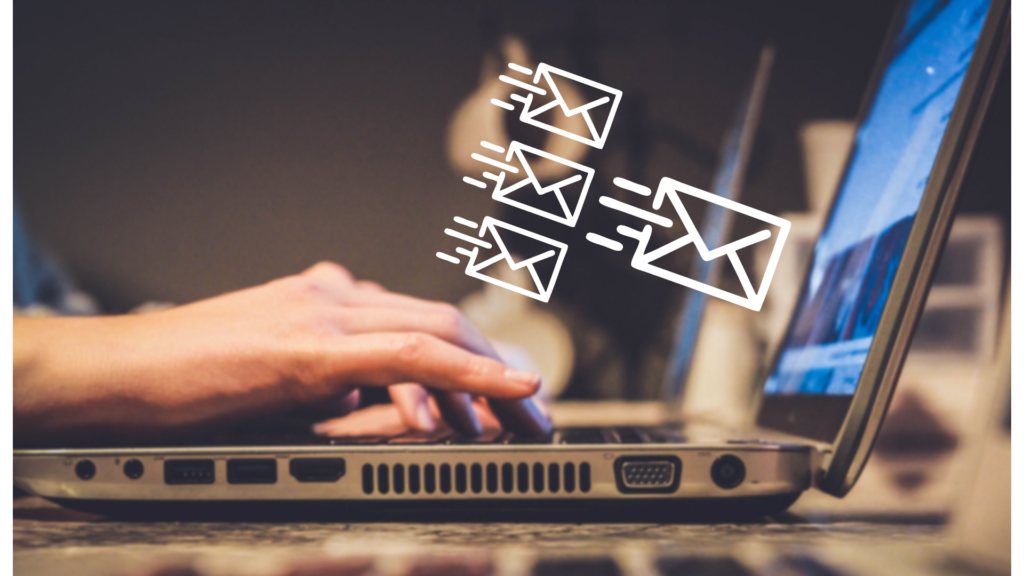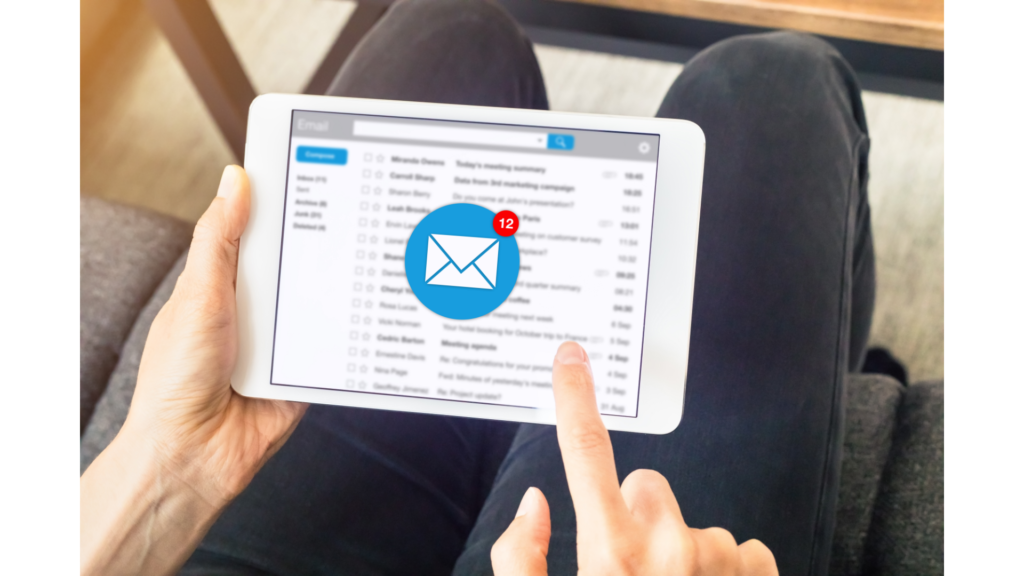Getting Started with Email Marketing for Beginners
Email marketing remains one of the most effective digital marketing channels for affiliate marketers to drive traffic and sales. Compared to social media and SEO, email delivers some of the highest conversion rates and ROI.
If done right, email marketing provides a direct line of communication to engage your target audience. This builds loyalty while converting subscribers into customers.
In this comprehensive guide, you’ll learn how to leverage email to grow your affiliate promotions and commissions.
Benefits of Email Marketing for Beginners: Affiliate Promotion

Here are some of the main benefits of using email marketing to promote your affiliate offers and deals:
Build Targeted Mailing Lists
The key to successful email marketing is building a targeted subscriber list around your niche. This allows you to deliver content and offers tailored to their interests, which converts at a much higher rate.
You can build targeted email lists using opt-in forms on your website and segmenting by interests and behavior. This level of targeting isn’t possible on generic social media platforms.
Deliver Personalized Content
Email also allows you to deliver personalized content and recommendations to subscribers based on their preferences and purchase behavior.
For example, you can promote certain affiliate products to subscribers who have purchased related items in the past. Personalized content performs much better.
Send Timely Broadcasts
Email enables you to reach your audience directly in their inbox. You can send real-time broadcasts about time-sensitive promos, deals, and affiliate offers.
This allows you to capitalize on key retail events or promotions as they happen rather than waiting on social media algorithms.
Build Relationships
With email, you can nurture ongoing conversations and build personal relationships with subscribers. This establishes you as a trusted source for them to buy from.
Email also provides data and feedback on what resonates with your audience that you can use to strengthen that bond.
Highly Measurable Results
Email analytics provide in-depth data on open rates, clicks, conversions, and ROIs for all your campaigns and messages.
You can clearly see what subject lines, content, and offers perform best with your audience. This allows constant optimization over time.
Overall, email is the optimal way to build an audience, foster trust, and directly promote your affiliate offers through targeted, personalized, and timely content.
Now, let’s walk through the key steps to get started…
How to Start Email Marketing for Beginners

Follow this step-by-step process to set up your first email marketing campaign to promote affiliate products as a beginner:
1. Select Your Email Marketing Platform
The first step is choosing an email service provider (ESP) to manage your contacts, send/track emails, and analyze results.
Some top options to consider include the following:
– Mailchimp – Free for under 2,000 subscribers
– AWeber – $19/month for up to 500 subscribers
– Constant Contact – $20/month for up to 500 subscribers
These platforms make it easy to create opt-in forms email campaigns, and analyze performance. Most offer a free trial to test them out.
2. Create Your Opt-In Form
An opt-in form allows website visitors to subscribe to your email list. This grows your audience.
Most email platforms provide pre-made opt-in form templates you can customize by adding:
– Headline – high-level value proposition
– Brief text – explain you’ll send affiliate promos, deals, etc.
– Email field – to collect their address
– Button – call-to-action to subscribe
Place the form prominently on website pages and posts using a widget or pop-up. Offer an incentive like a discount code or giveaway to encourage sign-ups.
3. Build Your Initial Contact List
In addition to the opt-in form, take time to build up your initial contact list manually
– Your existing customer email addresses
– Relevant contacts and leads from your CRM
– Other available email lists related to your niche
Upload these to your email platform to establish a starting subscriber base before actively growing your list.
4. Set Up Email Automation Workflows
Leverage your platform’s automation features to set up welcome/onboarding flows for new subscribers:
– Welcome email – Thank them for subscribing with a coupon code or exclusive deal.
– Onboarding series – Send pre-made 5-6 emails over the first two weeks educating them on your niche, products, and value proposition. Offer additional discounts throughout.
This automation nurtures new subscribers right away and builds engagement.
5. Create Your First Affiliate Promotion Email
For your first dedicated affiliate promotion message, focus on showcasing one exclusive offer or deal tied to 1-2 affiliate products or companies.
Include:
– Relevant subject line reflecting the deal or incentive
– Eye-catching header image
– Brief context on the affiliate partner/brand
– Details of the special promotion or coupon code
– Affiliate-linked call-to-action button
– Clear start/end dates
Keeping your first promo email simple will enable you to test performance and fine-tune future messages.
6. Set Up Your Broadcast Schedule
Determine the ongoing cadence for sending affiliate promotion emails such as:
– Product highlight emails – Every 1-2 weeks showcasing specials on specific affiliate products.
– Holiday/event emails – Timed around major retail events like Cyber Monday or Back-to-School season.
– Coupon code emails – Monthly promos with sitewide coupons offering % discounts or $ off affiliate product orders.
A predictable schedule keeps your brand top of mind with engaged subscribers.
7. Integrate Email with Social Media
Leverage your social presence to promote affiliate emails further:
– Post preview images on Facebook/Twitter teasing the promo details.
– Share email sign-up forms regularly.
– Re-promote affiliate offer links from high-performing emails.
This expands your reach beyond just email subscribers.-Email Marketing for Beginners
8. Analyze Performance Metrics
Dig into the email analytics and reports to identify:
– Open and click-through rates for each message
– Conversion rates and sales from links
– ROI of promotions
– Best-performing segments
Use these insights to refine your affiliate email campaigns over time. Testing subject lines, content formats, timing, promotions, and products will enable you to improve results constantly.
So, in summary, the keys are choosing a quality email platform, growing your subscriber list, automating workflows, sending regular affiliate promo emails, integrating with social, and analyzing the data.
Within a few months of consistent testing and optimization, you can build an effective affiliate email promotion channel.
Need More Marketing Content? Here are a few of our selections:
High Ticket Digital Marketing- The 411
Email Marketing for Beginners: Tips and Strategies for Affiliate Marketing

Once you have the basics down, there are a variety of proven email marketing tips and strategies to enhance your affiliate promos further:
1. Send Behavior-Triggered Messages
Set up automated messages triggered by specific user behaviors like:
– Cart abandonment – Send a reminder to complete the purchase.
– Post-purchase – Follow up with related products and incentives to re-engage.
– Product recommendations – suggest affiliate products based on past purchases.
Personalized behavioral triggers convert rapidly by catching subscribers at the right moment.
2. Promote Time-Sensitive Deals
Leverage email to promote short-term deals and steals timed around major retail events:
– Countdown clocks showing an offer’s expiration
– Flash sales only lasting 24-48 hours
– Inventory warnings like “Only 5 Units Left at This Price!”
This instills urgency and motivates purchases faster.
3. Send Email Follow-Ups
Don’t just send a single standalone promo. Follow up with reminder emails:
– Recap the deal and benefits
– Add social proof with testimonials
– Share user-generated photos of the product
– Answer common questions
Multiple touchpoints improve conversion rates significantly.
4. Personalize Content
Personalize email content based on subscriber interests and attributes:
– Recommend products based on past purchases
– Segment by demographics like age or gender
– Tag subscribers by preferences and behavior
Personalized content can improve open rates by over 26% and click rates by over 14%.
5. Leverage Exit-Intent Pop-Ups
Use exit-intent email pop-ups to capture leads who attempt to leave your site without signing up.
These retroactive offers stop them from leaving and convert abandoning visitors into subscribers.
6. Co-promote with Other Affiliate Partners
Run co-promotions where you partner with one or more complementary affiliate brands:
– Cross-promote each other’s offers to your respective email lists
– Co-brand the emails for broader appeal
– Give away products from both affiliates
This expands exposure and taps into new audiences.
7. Promote Affiliate Content and Coupons
Don’t just promote affiliate products directly. Also promote:
– Coupon codes and sitewide discounts for an affiliate brand
– Relevant affiliate blog content and resources
– Affiliate-sponsored giveaways and contests
Different hooks and incentives will appeal to different segments of your list.
8. Highlight Affiliate Product Uses and Benefits
Focus your messaging on real-life use cases and benefits of the products versus just product features:
– How does it solve customer problems?
– What outcomes can they achieve?
– Customer success stories and testimonials
Tangibly communicating the value prop connects with subscribers better. This drives more conversions than generic product descriptions.
9. Test Pre-Header Text
Leverage the pre-header text that displays next to the subject lines in inboxes:
– Use urgency cues like “24 hours only!”
– Ask questions like “Need a laptop upgrade?”
– Include benefits like “Get $50 off your purchase”
Subject lines get people to open, and pre-headers get them to click through.
10. Promote Affiliate Free Trials and Samples
If an affiliate offers free trials, samples, or freemium tiers – promote those heavily:
– Lower barrier to initial signup
– Lets subscribers test and experience benefits firsthand
This is especially effective for higher-priced services or SaaS products.
These advanced email marketing tactics tailored for affiliates will take your results to the next level. Always focus on providing real value to subscribers and understanding their needs.
With consistent testing and optimization, your email promotions will become one of your highest-converting channels for growing affiliate revenue.
Email Marketing for Beginners FAQs

Here are answers to some common beginner questions on leveraging email marketing for affiliate promotion:
How quickly can I expect to see results from email marketing?
Give email at least 3-4 months of consistent focus before evaluating ROI. It takes time to grow your list, fine-tune messaging, and earn subscriber trust. Most advertisers don’t see a positive return on investment (ROI) from email until they’ve sent for at least 3 or more months. Have realistic expectations when starting out.
What types of promotions work best for affiliate email?
The most effective promotions are time-sensitive, exclusive deals that create a sense of urgency, like flash sales, special coupon codes, or expiring discounts for subscribers only. Limited inventory warnings also work. Promotions tied to major retail holidays also perform well.
What is a good email send frequency?
For active affiliate promotions, aim for 1-3 emails per week as you’re ramping up. This maintains visibility and engagement while allowing enough time in between messages so that you don’t overwhelm recipients. Then, over time, taper down to a more sustainable cadence of 2-4 monthly emails.
What is a good email list size to begin with?
When starting email marketing for the first time as an affiliate, focus on building a solid, targeted list of at least 500-1,000 engaged subscribers. Don’t worry about list size out of the gate. With a small but targeted list, you can better understand what messaging works and fine-tune your approach before scaling up.
Should I only send affiliate promo emails?
No, it would be best if you had a balance of affiliate promotions, general brand content, valuable educational content, subscriber surveys, and more. Promo emails should make up no more than 30-40% of what you send. This maintains trust while keeping your brand at the top of your mind.
What tools can help me create emails?
Many email platforms have drag-and-drop editors to design and layout your emails visually. You can also use graphic design apps like Canva. For copywriting help, tools like ConvertKit’s RocketGrammar can help improve and strengthen your text.
Should I segment my list?
As your list grows, yes. Leverage email segments tailored to certain subscriber interests based on their attributes and past behavior. This allows ultra-targeted promos. For example, create one segment for subscribers who opened a past promo email for a smartphone accessory affiliate, then target new related offers to them.
How do I get subscribers to open and read my emails?
Strong subject lines are key. Research shows subject lines that are 6-10 words long, ask questions, mention benefits, invoke urgency/timeliness, include the recipient’s name, leverage power words like “Announcing,” “Exclusive,” or “Limited Time,” and tie to holidays/events perform best.
Compelling subject lines and concise, value-focused email copy encourage opens and engagement.
So, in summary, be patient, systematically test promotion types, focus on quality over quantity, balance educational and promotional content, personalize messaging, segment your list, optimize subject lines, and deliver subscriber value above all else.
Conclusion of our coverage of Email marketing for beginners
Implementing email marketing for beginners effectively takes consistent testing and refinement over an extended period. But the long-term payoff for affiliates makes it well worth the effort.
With a targeted list, well-crafted campaigns, and promotions that provide real value, you can build direct relationships with your audience to drive conversions.
You don’t need advanced technical skills to get started with email. Just focus on the fundamentals outlined here. Over time, you’ll gain the experience and data to improve results constantly.
And remember always to make delivering value to your subscribers a priority over aggressive self-promotion. If you help them, the sales and commissions will naturally follow.
Try out the steps and strategies in this guide to start integrating email into your affiliate marketing efforts. With a thoughtful and patient approach, you can make email a cornerstone of your promoter strategy.
